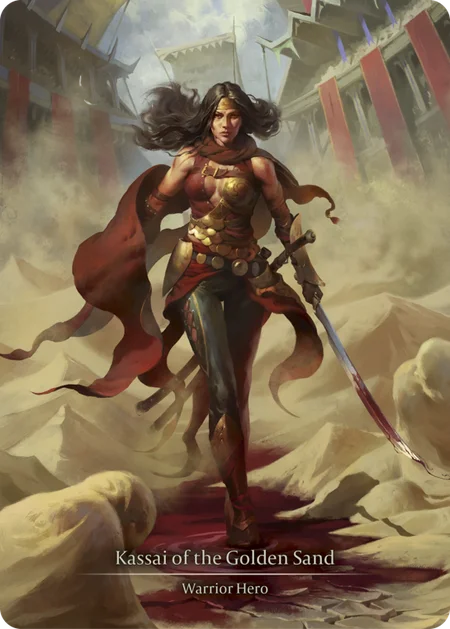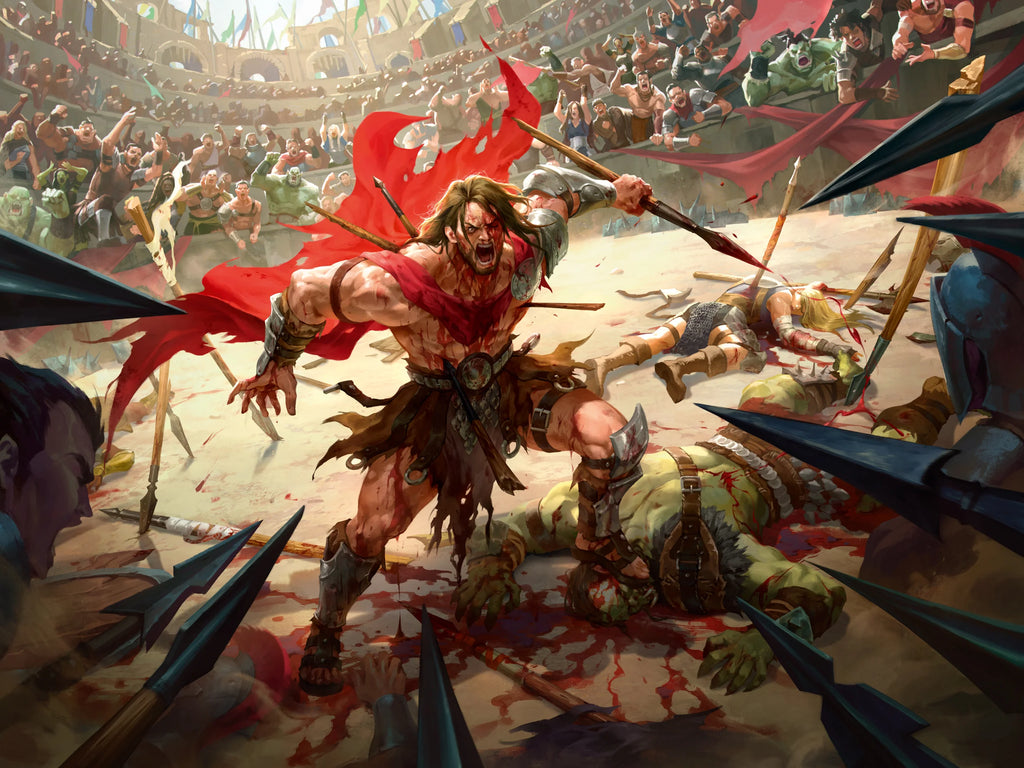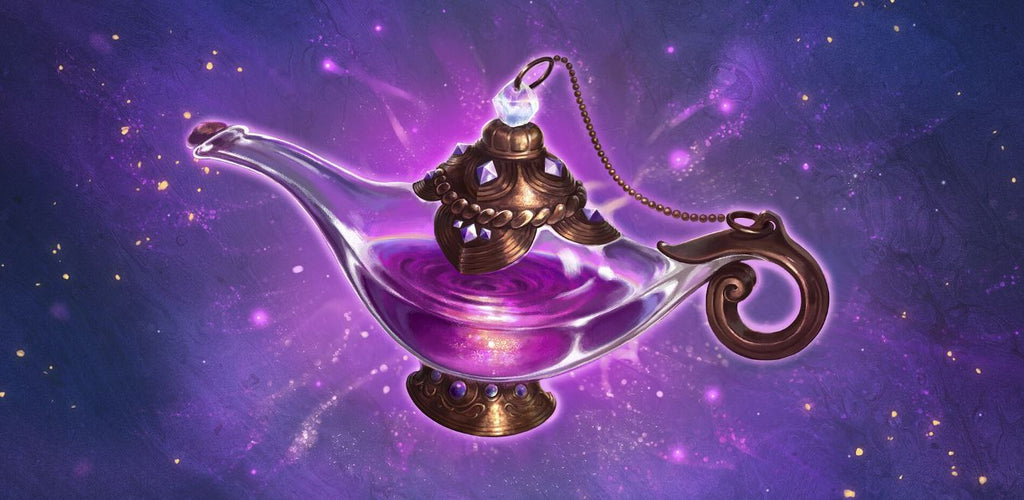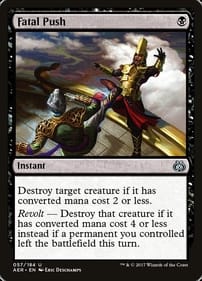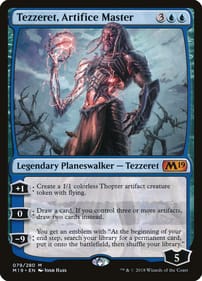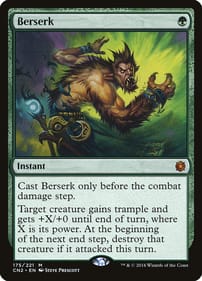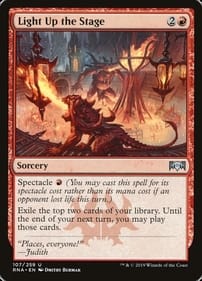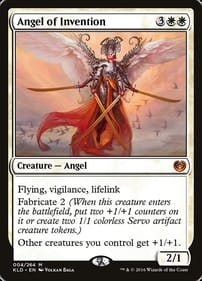New Gundam Card Game?
Bandai is developing an exciting new Gundam Trading Card Game (TCG) set in the beloved Mobile Suit Gundam universe, with a global launch planned for 2025. The game will be available in multiple languages, including Japanese, English, and Chinese, and will immerse players in strategic battles reminiscent of those seen in the anime series. Before the official release, a special "Edition Beta" set will be available starting in December 2024. This early edition will include everything needed to build decks and start playing, giving fans an early opportunity to experience the game and familiarize themselves with the mechanics. Although Bandai hasn't fully revealed the detailed rules and gameplay yet, it’s expected that players will construct decks featuring iconic Mobile Suits, Pilots, and Factions from the Gundam universe. The gameplay will likely focus on outmaneuvering opponents in strategic combat scenarios, capturing the essence of the intense battles that define the series. The game is expected to feature a variety of card types: Mobile Suit Cards representing the mechs from the series. Pilot Cards depicting the operators of the mobile suits. Event Cards reflecting major battles and moments from the Gundam storyline. As with many TCGs, there will likely be rare and collectible cards, including foil cards, appealing to both players and collectors. Pre-orders for the "Edition Beta" set are already available, including through Premium Bandai USA. If you’re looking to pre-order or buy the game in Canada, it’s a good idea to check with local game stores or online retailers for availability. For the most accurate and current updates, you can follow Bandai’s official announcements or check out the Gundam Card Game's official website.
Duskmourn for Pioneer
The upcoming Duskmourn: House of Horror set introduces impactful cards for Pioneer, including the Verge Cycle lands, which could become staples. New Leylines, particularly Leyline of Resonance, offer strong combo potential, and Split Up adds a versatile control tool. The Overlord Cycle is expected to dominate top-end strategies, while Pyroclasm may slow down aggro decks. Additionally, the set enhances graveyard-focused strategies with new Delirium tools, but provides little support for Arclight Phoenix decks.
Read The StoryState of the game
State of the game By David Taylor As of August 2024, the meta for the Dragon Ball Fusion World TCG is dynamic and competitive, with several strategies rising to prominence due to recent expansions and adjustments in the game rules. Top Meta Decks: Frieza: Frieza is currently the most dominant deck in the meta. Known for its ability to exert control over the game and pressure opponents with a combination of powerful attacks and defensive strategies, Frieza has become the go-to choice for many competitive players. Its synergy with various support cards allows it to maintain board presence while disrupting the opponent's strategy, making it a consistent winner in tournaments. Android 17: Android 17 has emerged as a strong contender, particularly due to its ability to ramp energy while maintaining tempo. This deck excels in building up a powerful board quickly, which can overwhelm opponents if not addressed early. However, it faces challenges against decks that can disrupt its setup, particularly those with strong defensive capabilities like Frieza. Vegeta (Blue and Yellow): Vegeta decks have proven to be versatile, with both Blue and Yellow variants showing up in top tournament placements. Blue Vegeta focuses on control and resource management, while Yellow Vegeta leans into defensive play with counter-attacks. Despite their strengths, these decks often find themselves outpaced by the sheer power and efficiency of the top-tier decks like Frieza. Meta Trends: The current meta is characterized by a balance between aggressive strategies and control-oriented decks. While Frieza leads the charge with its balanced approach, decks like Android 17 and Vegeta are also making significant impacts, offering different playstyles that can adapt to various matchups. The recent ban list has led to some shifts in deck popularity, particularly affecting aggressive red decks, which have had to retool their strategies to remain competitive. As the game continues to evolve with new card releases and rule adjustments, players are constantly adapting their decks to stay ahead of the competition. The Dragon Ball Fusion World TCG meta is likely to see further shifts in the coming months, especially with the introduction of new expansions that could introduce powerful new cards and strategies.
Flesh and Blood Finally has Another Onboarding Point: New Player Considerations in Heavy Hitters
By Dimos Flesh and Blood’s newest set, Heavy Hitters, is reminiscent of Welcome to Rathe, the game’s first set. The classes and play patterns are similar, and they’re both very fun to play. However, I think the most significant similarity is that both of these sets represent a wide-open door for new players to enter through. Prior to Heavy Hitters, FaB has had a series of sets that have been less-than-welcoming to new players. Since Everfest in February 2022 (over two years ago!), I feel like Outsiders has been the only accessible onboarding point for new players. The mechanics of the set are reasonably simple to learn, and the decks and heroes had some significantly broad appeal to players (at least in my observations). However, there was not too much excitement in the set - and created few “wow” moments to draw newer players in. Some of the other sets released in this window were expansion sets – meaning they were not playable in draft or sealed formats and that each pack came with fewer cards split across more classes. This makes it a challenge to build a deck from just buying some cards and increases the information barrier required to get started. The remaining draftable sets in this timeframe (Uprising and Bright Lights) were polarizing for reasons like rules complexity, pace of play, constructed-format impact, or a mix of the above. While Round the Table is a solid introductory product, it is also very self-contained. Add in how isolated the Ultimate Pit Fight format is from the rest of the game, and it becomes difficult for a newer player to transition to the more widely-played formats. But now we have Heavy Hitters to bring new blood into the arena. The set gets a lot of things right, combining successes of previous sets and creating brand new highlights for new players. Even though Heavy Hitters has a bit of a contrived theme, it flows excellently. Games are consistently exciting with heroes from the set in both constructed and limited formats. The sealed format is quite strong, something that has historically eluded the gamemakers, and something I’m glad they’ve finally cracked. Draft is interesting, with meaningful differences between each of the six heroes. This allows different numbers of each class to get drafted at every table and still feel like there are eight balanced decks playing against one another. Looking at the data from the first week of Road to Nationals Classic Constructed events, it looks like the new heroes are contenders without being oppressive against old heroes. Overall, it feels like the set has hit the sweet spot in multiple ways, making it easier to bring someone new into the game. This is the first set in a long time that I am going to drag some non-FaB friends to play at Armories and draft nights because I think they’ll really enjoy it. If you’re not sold on Heavy Hitters yet, I recommend you play around with the cards – they’re much more convincing than I am. But, in addition to being a fun experience, what makes Heavy Hitters a better experience for newer players than giving them any other accessible, draftable set? In short, I think that Heavy Hitters has some of the best budget options and advancement pathways of any set in Flesh and Blood so far. The last time that this was a viable option was probably with Fai in Uprising. However, starting with a draft in that format would be a challenge due to the rules complexity required to play in a set with Dromai and Iyslander. But now there are six new viable budget options for decks to build. Some of these budget decks will be better and simpler than others, due in part to requiring fewer cards from previous sets. I recently sat down with a friend of mine to show him Heavy Hitters. He’s new to FaB and card games, but has experience with board games. We played some sealed, which he really enjoyed, then showed interest in building out his sealed deck into a proper Blitz deck. I let him go through my spare cards, which was mostly the Heavy Hitters bulk I had on hand. By the end of it, he had two very playable decks in Betsy and Kayo that could plausibly go 2-2 at an average Blitz Armory. I think there are three key elements in this process beyond the accessible rules and back-and-forth gameplay: the Rare headpieces, simple deckbuilding constraints and pathways, and affordable, powerful cards in this set and elsewhere. Each hero in Heavy Hitters has a specialization helmet at the Rare rarity. And they’re all fantastic. Many outcompete the three generic Legendary headpieces in the game (Arcanite Skullcap, Crown of Providence, and Balance of Justice), for about 30 cents each. While they may warp limited games, they’re a godsend in constructed formats. Four of them have a floor of Temper 2. Three extra health is fantastically strong in this game, particularly in the newer-player-advertised Blitz format. Generally, this amount of armor value has previously been locked behind much more expensive Legendary equipment. Rhinar’s Monstrous Veil and Kassai’s Hood of Red Sand only block for one, but have strong effects like the other helms. Most actively work with each hero’s power and main deck engine. Betsy’s and Olympia’s allow them to Wager, turning on their hero text so they can get the party started and start their gameplan of continuously making powerful tokens. Victor’s helps him block and generate Gold, which also allows him to draw a card and have a reroll for future Clashes. Kassai’s draws a card, allowing her to extend her turn, discount her next sword swing, and provide her more tricky options through attack reactions. Kayo’s helmet blocks for three, which is great. And possibly opens the door for a very desperate play if he’s behind – definitely the worst effect of the lot. Broadly, these are all Legendary-tier equipment that can slot into a new deck for pennies. They’re accessible, they’re powerful, and they’re a great way for new players to organically discover how strong blocking equipment is. Another reason why I think this set is so good for onboarding newer players beyond the simplicity of the rules is the natural pathways of deckbuilding in this set. Each hero has a clear direction to build themselves in, and can do so very effectively through Heavy Hitters cards. Betsy wants to Wager more than anything, and there’s only so many cards that allow her to do so (all of which are pretty good, if occasionally soft on blocking). Throwing a deck together with a bunch of cards that say “Wage” on them and adding generally good supporting class cards is a great way to build her, and is pretty close to the deck’s non-budget optimal build. Kayo allows you to run yellow and blue five-power attacks without sacrificing your consistency on Brute synergies. This allows double-dipping with his most powerful cards like Bare Fangs while keeping a strong resource base. Both of these broad lines were identified by my friend in his deckbuilding and he really enjoyed the experience of coming to those decisions through his own logic and discovery. I supplemented some aspects of it by introducing some cards from older sets, like Smash Instinct, Savage Feast, and a selection of Common and Rare Guardian Crushes. This deckbuilding simplicity continues through the set. Victor wants ways to make Gold and block effectively, both of which are clearly delineated through Heavy Hitters cards like Test of Strength, Test of Might, and big-damage Guardian attacks. Betsy is my first vote for the best budget deck to build – and not just because I saw it happen firsthand. Although Betsy may not necessarily be the strongest deck in the game, her pieces come together quite naturally, which is an important first step. However, what I think stands out about her is the upgrade path. Betsy performs excellently with Big Bet and Primed to Fight, both of which are very affordable as key pieces. Although she is not a top-tier hero when fully kitted out, she is a viable budget deck. She requires no key Legendary equipment as her affordable (but fashionable) hat is the main power piece in her engine. However, each equipment that can be used in Betsy can also be used in any other Guardian, both of whom are strong meta contenders. Betsy offers a very open door for new players to step into, build a deck with cheap key pieces, upgrade it however much they want, then swap over to one of two strong heroes depending on their preferred playstyle. The only unused cards will be Good Time Chapeau and Bet Big, neither of which have a price tag over $1 and won’t feel like a waste. Overall, a newer player can figure out how to build a deck using her, can do it without breaking the bank, and then convert that deck into other decks down the line. I think these three things show what FaB does best (organic gameplay and approachable deckbuilding) while mitigating some of its drawbacks (siloed card usage and convertibility into other decks or archetypes). Kayo would be my second choice of budget deck to build, but is likely to be more powerful. Throw in a lot of six-power attacks, some blue five-power attacks, some spare Bare Fangs, and then just let it ride. The reason that this isn’t my first choice of deck to build is because a lot of the upgrades feel either marginal, or can significantly change the strategy (Bloodrush Bellow or Berserk). Knucklehead is great at blocking, but it doesn’t advance the playstyle or learning of the deck at all. Additionally, the deck does not lend itself too much to convertibility for other heroes or archetypes. That being said, it’s not a total dead end, can become very powerful, and is, most importantly, a lot of fun to play. My final message with this article is to get anybody you know who’s on the fence about the game to finally start playing. It’s an easy set to pick up and play and it offers accessible options for diving into Blitz or Classic Constructed. The current variety of viable heroes means that no one is iced out of having a reasonable chance to win. Yes, Legendaries are still expensive, but they’re less necessary now than they have been since the number of options keeps increasing. I don’t think there’s been a better time to jump into this game since the Welcome to Rathe/Arcane Rising/Crucible of War era.
Heavy Hitters Comes Out of the Gate Swinging
By Dimos Flesh and Blood’s latest set, Heavy Hitters, is now officially out and it seems to be a smashing success with nearly everyone. I’m fairly biased towards the set since it features all three of my favourite classes. The set parallels Welcome to Rathe through its class selection and focus on a simplicity of gameplay. This is going to be the first in a series of Heavy Hitters articles. Next week we’ll be taking a dive into the wonders this set does for budget players. For today I’m going to be doing a run through of some of the banner elements of the set and some general design thoughts. We’ll be covering the design of the sealed set, how that impacts constructed formats. If you’ve been paying attention to the FaB scene recently, I’m likely not the first to tell you that Heavy Hitters Sealed is a fun experience that feels pretty good all around. My favourite thing about it is its approachability for both new and veteran players. It feels like the first set in a long time that I can introduce a card game novice to and confidently think they’ll have a good time. This being said, as someone who has played all of FaB’s limited formats on release, Heavy Hitters still offers a depth of play for the more experienced. The set features new mechanics that play very well with variance (Clash) and back-and-forth decision making (Wager), while also rewarding forward thinking and set-up plays (Vigor, Agility, and Might tokens). I think that the set may gravitate towards a consensus hero in Sealed with time, but it is refreshing not to see that hero be immediately obvious (like Briar, Fai, or Teklovossen were). This is another strength of the format – the meaningful deckbuilding decisions to be made in sealed. Should I run 30 cards or 35? Which class should I play? Which hero in that class should I play? The most important question I found myself asking when building my sealed deck is “Am I winning this game by out-valuing my opponent from turn-to-turn, or by putting together one or more big combo turns?”. In Heavy Hitters, I think either strategy is viable roughly half of the time, depending on which cards have access to. Answering these questions is what makes any limited card game experience fun, and this set asks them in compelling ways. The set certainly evokes a lot of the same feelings and play patterns as Welcome to Rathe did, and that parallel is no accident. While Welcome to Rathe is generally regarded as the best FaB limited set so far, it isn’t perfect – particularly in Sealed. I think Heavy Hitters does something better than Welcome to Rathe: it doesn’t allow for default fatigue strategies. In Welcome to Rathe Sealed, the go-to strategy was to play Bravo with as many three-block cards. You could consistently rely on the strength of Anothos to run your opponent out of cards. In Heavy Hitters, it feels like almost every card only blocks for two, even the defensive ones. This encourages people to play their cards, which leads to a more engaging back and forth. However, this has its costs for new heroes in Constructed formats. That being said, all that glitters isn’t gold – no matter how many tokens you make. My main hesitation in this set centres around how explosive some turns can be, and then be immediately followed by more explosive turns. In one of my prerelease games I strung together consecutive turns of 16, 19, and 14 damage as Kayo. That game didn’t feel like much of a game because of how quickly and decisively it ended. Across the room, another player was making it known that the same thing was happening to him. On the other hand, I had a couple of games come down to a tense one or two life tightrope walk which felt very exciting for both players. Variance is always an element in card games, but depending on the type of variance it can lead to positive or negative feelings. Clash is a very positive-feeling form of variance so far. Having your opponent deal so much damage that you couldn’t do anything to play the game certainly leads to negative feelings. I hope these successive powerful turns are not frequent occurrences, because they may tarnish an otherwise-fantastic set for onboarding new players. My biggest question in this set (for limited formats) surrounds Down But Not Out. This is a card that really shapes how games are played – you simply need a strategy to defend against it. Does it warp the entire experience of the set? I think it does, I just don’t think it's in a negative way (at least not with current understandings of the set). I’m curious to see how people’s perceptions of this card shifts with time, both as a powerful play and as a card that dictates how games are played even when it is not present. I think there could be a whole article devoted entirely to it, its design, how to play with and around it, and how to evaluate it. For now, I’ll leave it at this: I think it’s cool but can lead to some stolen games which can create mixed feelings. Moving on to the constructed side of this set, we see some old elements and some new elements. There are plenty of old elements in the simplicity of cards. Most cards have minimal text and even the wordier cards are explaining something that ends up being quite simple in practice. It is a very easily understandable set – and this translates really well to the pre-constructed Blitz decks that are available for the Heavy Hitters heroes. These finally (almost) feel like decently-powered starter decks that people could take to an Armory without being completely washed away. A lot of this comes from how strong some of the Rares are in this set – namely the specialization head pieces. We’ll dive more into that in a forthcoming budget-friendliness discussion. The other big thing I’ve noticed with the constructed impact of this set is that two of the new heroes, Olympia and Betsy, are locked into running a lot of two-block cards. As heroes whose abilities are entirely reliant on the Wager keyword, they are functionally blank without running cards that allow for Wagers. The issue is that nearly every card that allows one to Wager only blocks for two. Guardian and Warrior have historically not had the strongest numbers on offense, but they have been able to fall back on nearly every class card blocking for three. For Betsy and Olympia, this is no longer the case. Their offensive numbers remain below-average, in line with their classes, but now their defensive numbers are taking a significant hit. Betsy can partially get around this by focussing on the relationship between Gold generation and Good Time Chapeau, but it still requires more than a few two-block cards to do so. Olympia does have options to Wager some attacks with two three-block pump cards, but it still feels thin when playing a 60-card deck. It is quite possible that a lot of these cards did block three previously, but were changed to block two for the sake of balancing limited formats. Importantly, reducing the block ability of these cards would prevent block-only fatigue strategies from becoming dominant. It does not surprise me that these two heroes are the ones that appear to be much weaker (at least for now) in constructed formats, since it is so difficult to overcome low blocks. Overall, I am very excited for what this set does and will do. I think it’s fun, I think it’s going to shake up how the game operates, and I think it’s a great onboarding time for new players. If you know anyone who’s been on the fence about trying FaB, I think now is the time to push them towards it. It’s more affordable, more balanced, and more mechanically-understandable now than it has been since Welcome to Rathe was first released.
Different Tones of Flesh and Blood Communities
By Dimos In my experience playing local Flesh and Blood events in three different countries and across about a half dozen separate communities, I’ve seen a lot of different expressions of the game. Some communities run like pressure cookers for competitive play and deckbuilding. Showing up to an Armory event at these stores will pit you against highly-rated players practicing their top decks against other competitive players. Here, only the most invested new players stick around to become competitive enough to compete. Other communities run very casually with formats rotating between Blitz and sealed deck to keep barriers to entry low and the tone casual. In these communities, local competitive players tend to be less prevalent and tend to do their hardcore playtesting at home. In between these two extremes is a whole spectrum of communities that create and cater to players of all different types. None of these communities are better or worse than the other, but they all have different growth and maintenance patterns. Something that many people are saying will now impact these growth and maintenance patterns is the switch from XP-based National Championships invites to ELO-based invites. I don’t think that this will be the case. In the vast majority of communities and countries, anyone who can show up to two Road to Nationals events and have a winning record will likely accrue enough ELO to get their invite. Historically, these same individuals would likely have gotten enough XP in the same manner, since Road to Nationals wins are worth bonus XP. Based on current numbers, the vast majority of people with a positive ELO should receive an invite to Nationals. This is compounded with the fact that most countries have had their Nationals player cap expanded for 2024. I think this is a nice side effect of the ELO system still being relatively new. Whether this will carry forward into next year when the average player has a more established ELO rating is yet to be seen. In short – the math works out that if you have a winning record at two RTN’s, you should get an invite to Nationals. The only people I can see losing out from this change are those in communities that are geographically isolated and have only one RTN. I am sad to see the elimination of Cold Foil top 8 prizing though – that was one of my favourite previously-consistent things about RTN season. With the Gold Foil introduction for first place, the prizing skews even more top-heavy to align with every other FaB event and drive pure competition. Having been around a few nascent local FaB scenes, I’ve noticed that they tend to start off in similar ways. A multitude of formats and many different player types (casual, competitive, new, and experienced) all show up. Over time, the community shapes the nature of the events and the community composition to their preferences. With time, one notices more consistent attendance from one of either the competitive players or the casual players with minor overlap. This also tends to shape the formats that run at the store in the future – with competitive communities skewing towards Classic Constructed first and Draft seconds. More casual communities will run any format with frequent rotation. Broadly, I’ve noticed that competitive communities tend to have more consistent attendance from the same players, but not necessarily a higher average attendance. The less-competitive communities tend to be a bit larger, but with less consistent attendance. The different communities also have very different ebbs and flows of attendance. Competitive communities will be a flurry of activity in a new metagame then slowly die down as the format becomes more stable, or as people learn/get bored of the latest draft set. More casual communities are much less phased by the “staleness” of a meta and will keep showing up with new, barely-viable and increasingly jank decks each week, Another major factor in this evaluation of community evolution is the availability of other stores to play at. If there is only one place to play FaB within a commutable distance (usually in smaller cities), the community tends to either hybridize or die. Hybrid communities are where I’ve had some of my best FaB experiences – some weeks I can bring a full-power deck and try my hand with the more win-focussed folks at the event, and other times I can bring Genis to Blitz night. It’s hard to create this sense of community that appeals to a wide range of players when alternatives are available, but I do recommend trying to do so through varying formats with regularity. Having talked about the past and present, let’s talk about the future. New players are the lifeblood of any game, and FaB is no exception. No game can keep 100% of its players around forever, the door needs to revolve at some speed to avoid dying from attrition. LSS has really done all it can to court competitive players, and I don’t think that anyone is claiming they’ve not succeeded. A more in-progress courtship is happening on the casual side. LSS has tried to introduce social play events to FaB through the Social Play Melody Kit, thereby divorcing these events from the more competitive Armory-to-bigger-event ladder. I tried and failed to track down some of these events to play in and experience. There was a restricted amount of kits to go around and many stores with casual scenes may not have been invested enough to file the required paperwork to get the kits and run the events. Hopefully these kits and events become more widespread, as it can likely attract some new blood to the game, even if it is in peripheral formats like Ultimate Pit Fight. FaB has always been a multi-format game (mainly draft and Classic Constructed), and has a tendency to attract multi-format players. Maybe some of those players will be UPF and draft players, or UPF and Classic Constructed players instead of draft and Classic Constructed players. And, like all casual play discussions in the world of Rathe – it must end with the obligatory question of “I wonder what PvE will be like and when we’ll see it?”.





